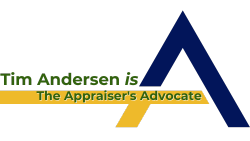According to various sources, one of the most common mistakes an appraiser makes is failure to include a proper Certification in the report. Many appraisers question how this is even possible. Automatically, the report writing software prints out a standard GSE or USPAP certification in every report. Therefore, how does an appraiser omit a proper Certification?
To answer this, look at USPAP’s ETHICS RULE, specifically the Management section. “An appraiser must affix, or authorize the use of, his or her signature to certify recognition and acceptance of his or her USPAP responsibilities in an appraisal or appraisal review assignment…” (ibid; italics for emphasis). SR2-3 makes it clear that “…[e]ach written real property appraisal report must contain a signed certification…”(ibid; italics for emphasis). Then, the SR makes clear the language of the Certification (here by reference). In the Comment to the SR, it is clear that “…[a]signed certification is an integral part of the appraisal report…any real property appraiser who signs a certification accepts full responsibility for the real property elements of the certification, for the real property assignments results, and for the real property contents of the report” (ibid; italics for emphasis).
What happens now is totally innocent on the appraiser’s part, yet its execution raises red flags. Further, in its execution, the appraiser fails to include a proper certification. States tend to see this omission not as an innocent act, but as a (1) willful act of violation of the ETHICS RULE, as well as (2) a written, signed, demonstration of the appraiser’s lack of competency. So, what is this egregious omission?
The Certification carries this clear statement: “I have performed no (or the specified) services, as an appraiser or in any other capacity, regarding the property that is the subject of this report within the three-year period immediately preceding acceptance of this assignment” (ibid). This statement is supposed to be in the Certification. Indeed, by signing the Certification, the appraiser certified this statement is both true and correct. So, what’s the problem?
For reasons unknown, appraisers tend to intersperse this statement, as well as others from the Certification, willy-nilly throughout the appraisal report (usually as part of an addendum). That this protocol to intersperse randomly is redundant, thus unnecessary, should go without saying. Yet it is common practice. It is this random interspersing that is the problem. It is a problem because this is a statement, according to USPAP, to which an appraiser must certify. Yet, if such statements are interspersed randomly throughout the document, but the appraiser does not sign that page attesting to their certification, the appraiser has omitted a proper certification. Omission of a proper certification is (1) a willful violation of the Management section of the ETHICS RULE, as well as (2) a signed, written declaration of the appraiser’s lack of knowledge of USPAP which, in and of itself, in an admission of incompetency.
State appraisal boards consider a violation of Ethics to be a voluntary admission of a lack of respect for the rules, as well as a voluntary admission of lack of respect for those who choose to follow them. A state board has the right to assume a given appraiser understands USPAP and its ethical and practical requirements. After all, a member of the public chooses to be an appraiser. By becoming an appraiser, that person chooses to learn, understand, and then follow the rules (i.e., USPAP). Because of this choice to follow the rules, not to follow them is also a choice.
And therein lies the issue. To violate Ethics is a choice the appraiser makes. To claim the appraiser did not know action-X was a violation of ethics (even if that is true) is also to claim that appraiser chose to be sufficiently incompetent to understand USPAP. USPAP abhors incompetence and state appraisal boards abhor violations of Ethics. Why those Board do is (or should be) clear. To act unethically or incompetently is to fail to “…promote and maintain a high level of public trust in appraisal practice…” (ibid; USPAP’s Preamble). Not only does that reflect on the unethically and incompetently acting appraiser, it also reflects poorly on what all appraisers do, as well as how they do it.
Therefore, the wise appraiser will go thru his/her templates and purge from them any random statements that rightfully and properly should be within the four-corners of the Certification, but at no other place in the report. To fail to do so is to choose to act both (1) unethically as well as (2) incompetently.

We are a family run dive centre in Cyprus, we love your content!
Thanks! If I ever get the honor of diving in Cyprian waters, it will be thru your good offices! Thank you and happy 2020!
A wonderful content. I want to talk. Please contact me by email divingcyprus[at]gmail.com
Thanks. I emailed you. TIM
This is article May I ask you to contact us so that we can talk. It’s so good that i’m going follow you!
Hi! Please feel free to contact me at tim@theappraisersadvocate.com at your convenience. Thanks!